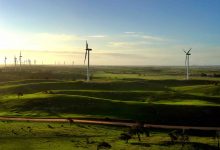South Australia’s state Liberal government has again distinguished itself from its federal Coalition colleagues by signalling an acceleration in its push towards a clean energy transition, and emissions reductions.
State Premier Steven Marshall hinted in a newspaper interview on Friday that a zero emission target for around 2050 (or even earlier) could be on the cards, and possibly unveiled when state parliament resumes for 2020 next Wednesday and is formally opened by the state governor.
The Marshall government has already unveiled a plan to reach “net 100 per cent renewable energy” by around 2030, and Marshall said in his interview with the Adelaide Advertiser that the state was likely to reach around 75 per cent by 2025-26 – just as the previous Labor government had targets.
Marshall told the (Murdoch) newspaper that the state should be a net zero carbon emitter by 2050, and while that in itself would be insufficient to change global weather patterns, it was important for the state to do its part, and show leadership in the transition.
South Australia is already a world leader in the uptake of wind and solar, which accounts for around 55 per cent of local electricity demand – a particularly stunning outcome when the state’s location at the end of a long, skinny grid is taken into account.
Its push towards 100 per cent net renewables, and beyond to be a net exporter, will be accelerated by the construction of a new transmission link with NSW that will mean South Australia is part of an “energy circle” rather than at the end of the line. That will make exports easier and boost energy security, and it should lower prices too.
“It has changed the psyche of the people of SA, and Australia,” Marshall said of the bushfires, which have devastated parts of the state including Kangaroo Island and the Adelaide Hills region.
Marshall said the energy blueprint would focus on opportunities in renewable hydrogen power, and expanding home solar and storage, as well as more big grid-scale batteries and new large scale wind and solar plants. There is more than $20 billion of such projects in the pipeline.
“With the changing technology, it creates enormous opportunity for us to improve our grid stability, lower prices and cut our emissions at the same time,” Marshall said.
Marshall also hinted at broader climate measures, including planting more trees to combat “hotter and drier” suburbs, ensuring the coastline was protected against worsening erosion, and readying for a “greater level of bushfires”, and so-called “blue carbon” storage in the seagrass and mangroves.
“Our coast is right on that frontline of the climate change impact in SA,” he told the Advertiser.
“Another thing is cooling our suburbs. It is hotter and drier, so this whole concept of green Adelaide, where we are planting more trees and cooling our suburbs will become a focus.
“It’s how you adapt when you have got a changing climate.”










